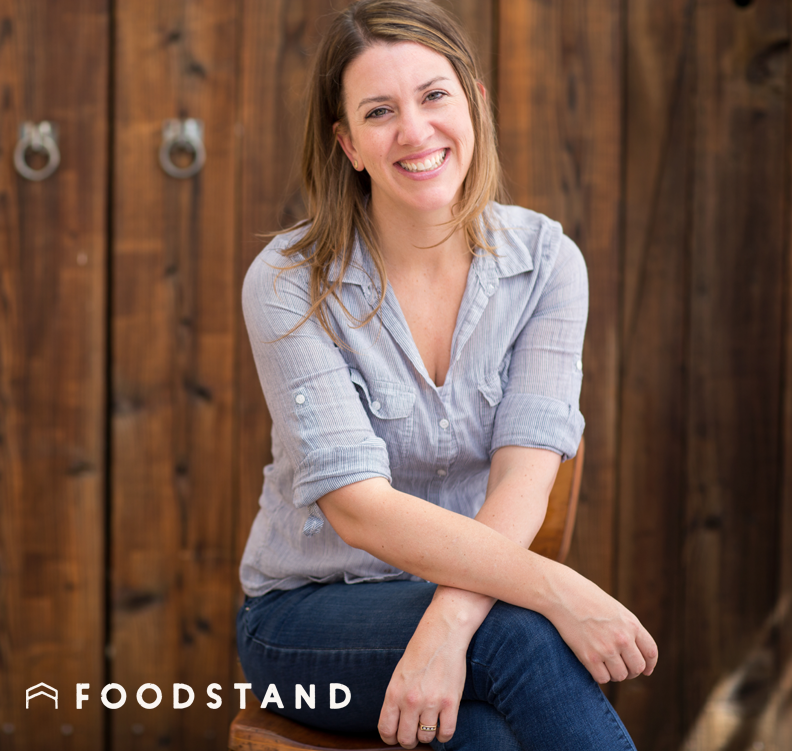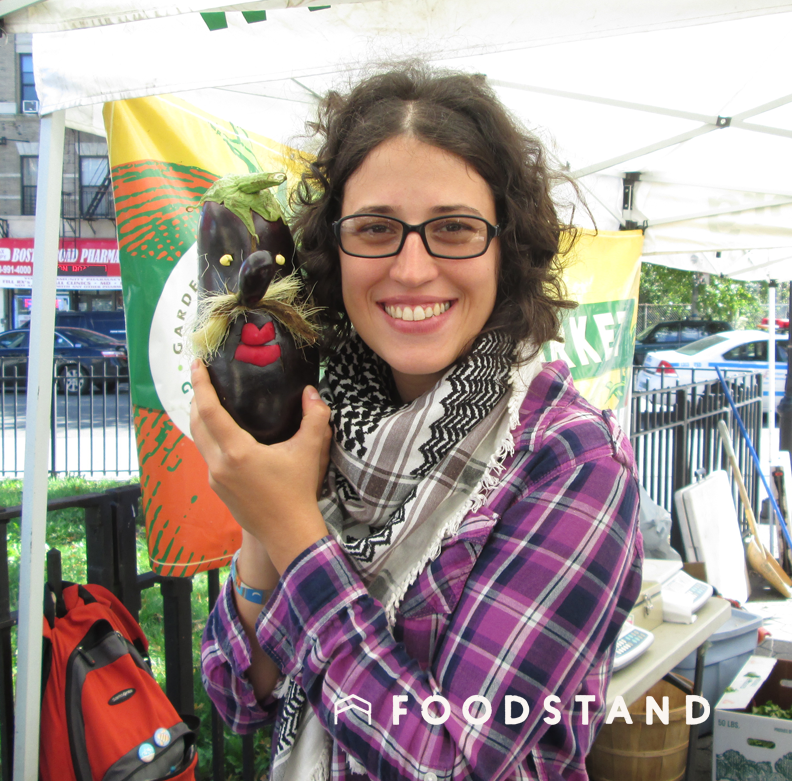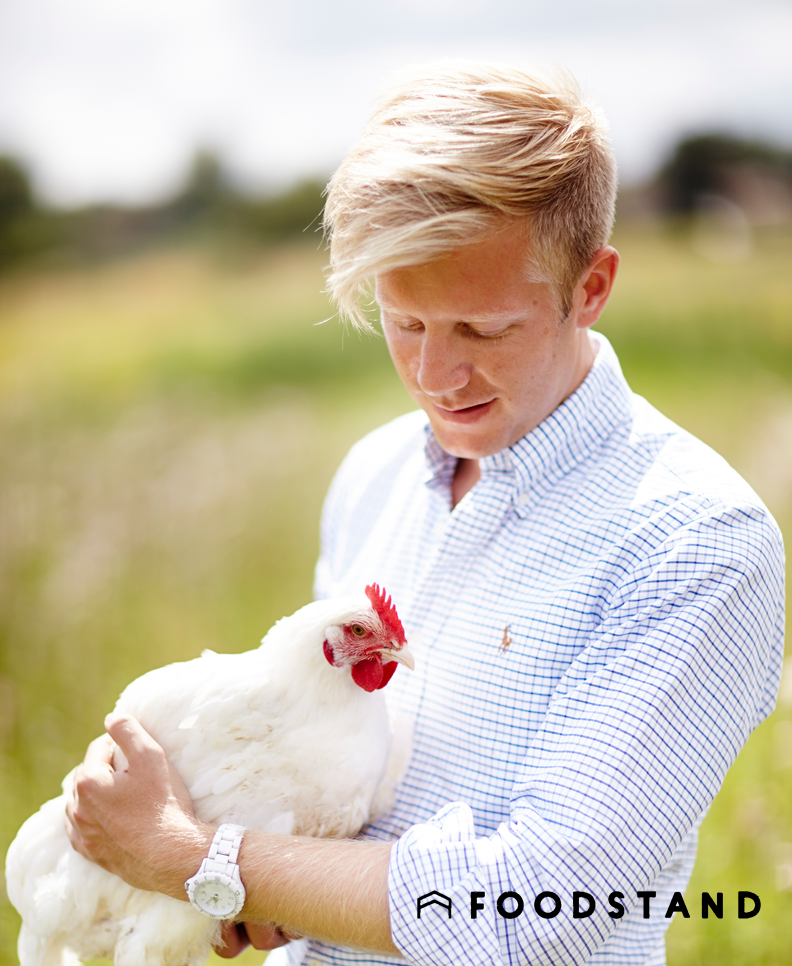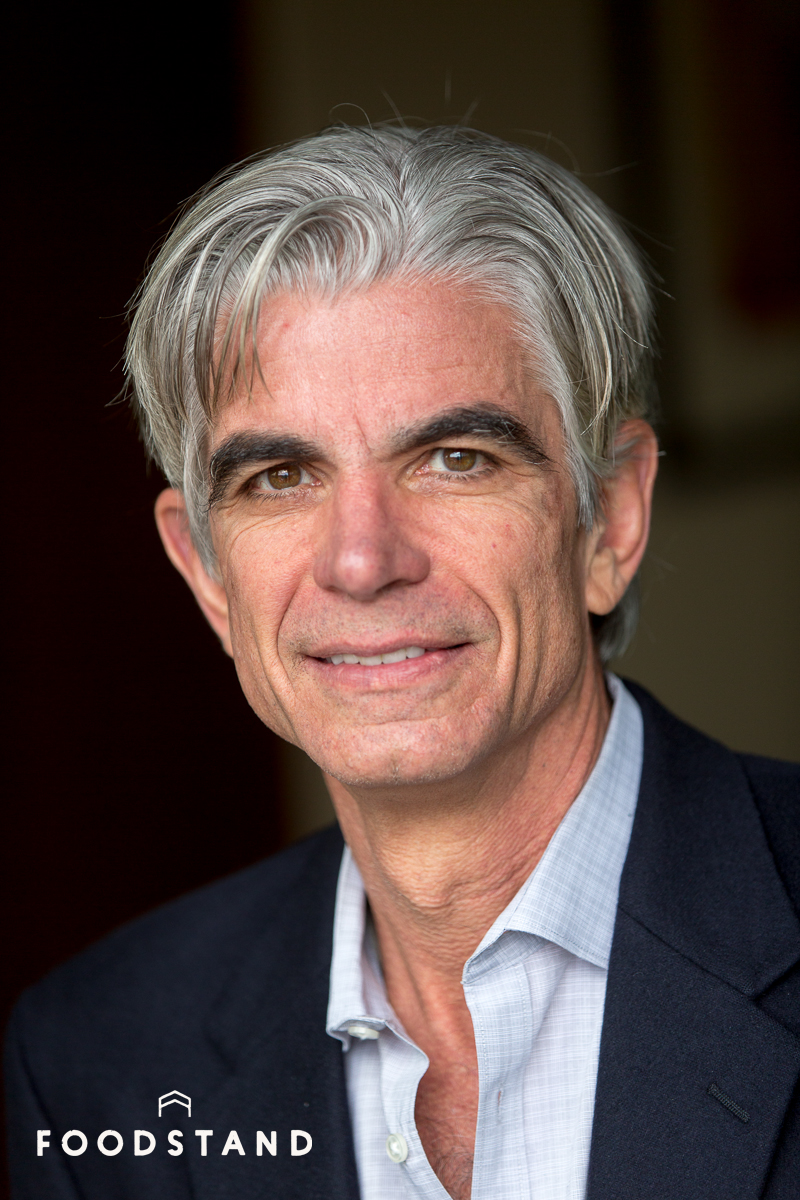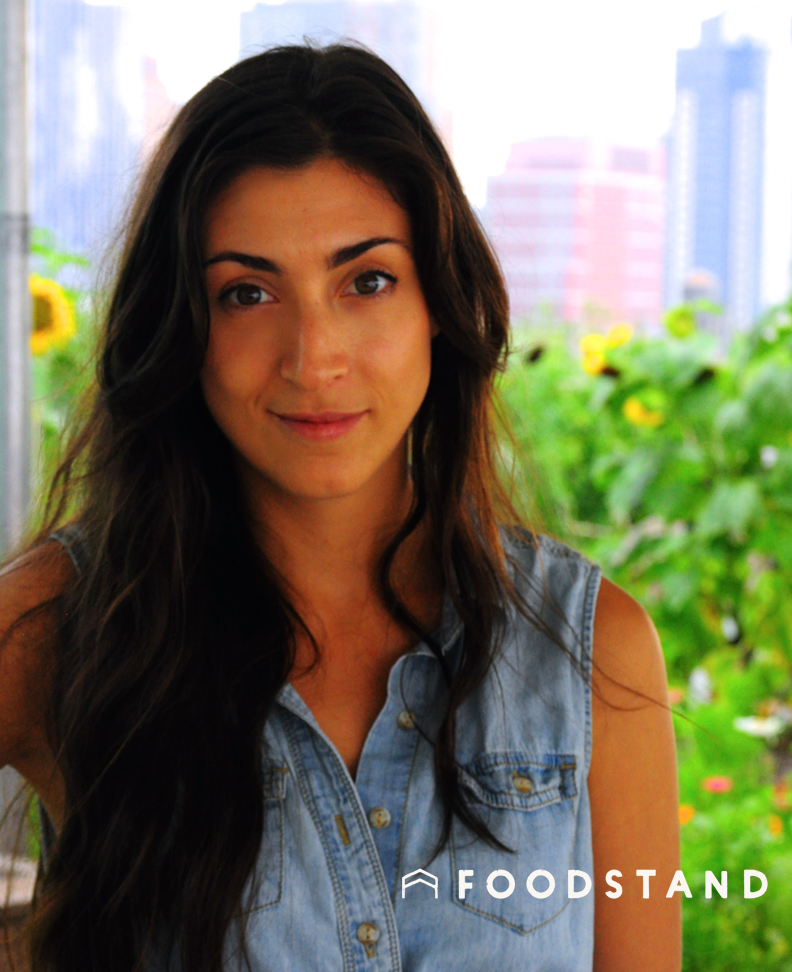
Emily Broad Leib is an Assistant Clinical Professor of Law at Harvard Law School, and the Director of the Harvard Food Law and Policy Clinic (FLPC). #NoFoodWaste is a significant piece of her life’s work.
How do you define good food?
To me, good food is less about an individual food project and more about the ethos by which we produce, distribute, sell, and recycle all of our food. Food should be produced in ways that internalize rather than externalize costs so that it is more sustainably raised; it should be produced in ways that do not disproportionately burden certain sectors of society; it should be as healthy and safe as possible; and it should be affordable and accessible to all sectors of society.
You wear many hats—tell us a little about what it is that you do.
I direct the Food Law and Policy Clinic at Harvard Law School, which means that I teach law students about the major issues in food law and policy both in the classroom and via hands-on projects for clients and communities. Our work focuses on increasing access to healthy foods, assisting small and sustainable food producers in breaking into new commercial markets, and reducing the waste of healthy, wholesome food.
In addition to food waste, right now we’re working on supporting the legal and policy needs of food policy councils in cities and states around the country; striving to improve access to and quality of food in schools; identifying opportunities to provide healthy food to those diagnosed with a diet-related disease through our food is medicine work (partnering with our colleagues at the Center for Health Law and Policy Innovation); and supporting sustainable food production.
In all of these areas, we are bringing legal and policy expertise to help figure out ways to make the food system healthier, more sustainable, and more equitable.
How did you start working on climate change and food waste reduction?
In law school, my main focus was human rights. After law school, I took a fellowship in the Mississippi Delta doing community organizing and community development around health and economic opportunity. While there, I learned how issues like food access and food production impact grassroots communities, and how law and policy have a major role to play in these issues. I realized that food is closely linked to two of the major social issues facing this country—health and climate change—and that there is much work to do.
After working in various food policy issues for several years, my work in food waste reduction began from a project we conducted on behalf of Doug Rauch and the Daily Table. Through our work for Doug, we began looking at the laws in Massachusetts around date labels on food. When we zoomed out from Massachusetts to see what surrounding states were doing, we identified a dizzying array of state laws on date labels, many of which restrict sale or donation of past-date foods for no good reason. We found that there are many areas where law and policy play a role in driving increased food waste, or in preventing the recovery of safe and edible food.
Last year you were awarded funding under Harvard President Drew Faust’s Climate Change Solutions Fund.
Yes, my project “Reducing Food Waste as a Key to Addressing Climate Change,” confronts the challenge of climate change using the levers of law, policy, and economics, as well as public health and science. This support has helped us to build and expand our work in this area, which has only grown as we have come to learn about the major challenges posed by food waste, and the ways that law and policy can have an impact on this societal issue.
Tell us about your work with date labeling.
Our work on date labels began with the research we conducted for the Daily Table, helping them to better understand federal and state laws about whether and how past-date food can be sold or donated. After seeing how widely state date label laws vary, we were convinced that these state laws were not based in science or sound public policy. We teamed up with the Natural Resources Defense Council to conduct a more detailed national study on this issue, and in September 2013, we co-published The Dating Game, which analyzed the laws regarding expiration dates and explained how these unclear and unregulated labels contribute to an alarming amount of unnecessary food waste.
In the past few years, we’ve worked to raise awareness about this issue and to conduct additional research to help policy change to make date labels more uniform, clear, and coherent. For example, earlier this year, we release a short film entitled EXPIRED: Food Waste in America and have worked to help raise awareness at events and conferences nationally.
Last month, we released the findings of a national survey, conducted earlier this year with Johns Hopkins Center for Livable Future and National Consumers League, which found that many consumers throw away past-date food because of safety fears. We found one-third of consumers always throw food away after the date, and 84% do so at least occasionally. One-third of consumers also believe these dates are regulated by the federal government, which is inaccurate (currently, only date labels on infant formula are federally regulated). An average household of four waste $1,560 – $2,275 annually, and much of this is because of confusion over date labels. That’s money and food that doesn’t need to go down the drain!
What’s the latest date labeling news?
The introduction of the Food Date Labeling Act by Senator Richard Blumenthal and Congresswoman Chellie Pingree in mid-May is a fantastic development, because this legislation helps to create coherent, standardized date label language by simplifying date labels to two well-defined options: a quality date, indicated by “best if used by” and, for the very few foods where it’s applicable, a safety date indicated by “expires on.” If the bill does pass, it will be a big deal, because people may be more likely to take these labels seriously if they are clearer about what they mean, and are mandated by the federal government. Of course, we will need some serious consumer education to make this work, but the legislation also requires the FDA and USDA to help educate consumers so they can make better decisions about their food moving forward.
Do you think that food waste is the largest issue currently surrounding our food system?
I do think food waste is one of the biggest issues. It presents a grave threat to our economy, our health, and our environment. The good news is that addressing food waste has the potential to positively impact all of these areas. The NRDC estimates that redistributing just 30 percent of all the food lost in the United States could feed every food-insecure American their total diet. And reducing food waste can play a major role in reducing negative impacts on our environment and our climate. All the issues in our food system are amplified when we waste so much food. For example, food production requires the use of many natural resources, like water and land, and all of these are overused when we throw away 40% of the food we produce. Issues like antibiotic resistance, pesticide use, and fertilizer runoff are also amplified by the amount of food that we throw away.
Food issues have barely made it into the race for President. If the future President were to consider food waste solutions, how should they be addressed?
Obviously I think that addressing food waste is very important. But I think this should be something that is considered as part of a comprehensive review of our food system. We are working on another project that is examining this concept—“Blueprint for a National Food Strategy,” that we are conducting in partnership with the Center for Agriculture and Food Systems at Vermont Law School. Many of the agencies and authorities regulating our food system are not aligned, and often tradeoffs are made without a critical look at the best outcomes for sustainability, health, equity, and the economy. Our project takes an in-depth look at the benefits and critiques of a national food strategy, the legal mechanisms that could be employed to develop such a strategy, and the means by which stakeholder engagement could ensure that such a strategy is effective and inclusive. Our research is looking at other countries that have developed national food strategies, and also examining national strategies that the U.S. government has created for other issue areas, such as HIV/AIDS, Environmental Justice, and Health Quality.
There are a lot of opportunities to improve the U.S. food system, and using a coordinated strategy could help us identify the overarching goals for our food system and the strategies to achieve those goals, while streamlining the work of all agencies that are creating food policies often in tension with one another.
What is the most rewarding aspect of your job?
In addition to loving the work that we do for communities around the country by helping them to understand and better utilize the legal system to affect change in their food policies, I like helping people to understand the role that law and lawyers play in the food movement, and getting people to see us as a resource.
What are you working on right now?
Right now, FLPC is working to create a cohort of food lawyers and food advocates across the country. One aspect of this work has involved creating a network of faculty and law schools interested in food law, which launched this year called the Academy of Food Law and Policy. Last year we held the first Food Law Student Leadership Summit at Harvard Law School, and brought together 100 law students coming from 50 law schools in 30 states. We will be holding the second Summit this fall, at Drake Law School in Des Moines, Iowa. We’ve also identified student leaders and helped them launch the Food Law Student Network earlier this month. Being able to engage with students at Harvard Law School and across the country is incredibly rewarding and helps us to educate and empower the next generation of leaders in food law and policy.
WANT TO BE FEATURED ON BEHIND THE PLATE?
DOWNLOAD THE FOODSTAND APP!
What’s one of your first (and most memorable) interactions with food?
I grew up in a food-loving household and have always lived to eat (rather than eating to live). In my mother’s family, a lot of our family traditions are passed down through the food that my mother (and her mother, and her mother’s mother) cook. It’s hard to think of just one food memory, when food is tied to most of my childhood memories.
If you could get the general population to change one aspect of their eating habits, what would it be?
I would really encourage people to stop relying on expiration, sell-by, and best-by dates. Trust your eyes and nose to tell you when something has gone wrong, rather than the arbitrary date on the package. At least until the Date Labeling Act has been passed! And beyond that, make responsible decisions about what you do with food past its peak—there are lots of ways to better store, cook, and prepare food so that you don’t have to throw it away. We are all contributing to the problem of food waste—45% of the food wasted in the U.S. happens in consumers’ homes.
If you weren’t doing what you’re doing, what would you be doing?
I think I would own a bookstore. When I was little I always thought I would be a writer and operate a bookstore. Sadly these days bookstores are not that successful because of e-books, so I don’t think it is a good retirement plan, but it is nice to imagine being surrounded by books all day and having the time to read them all!
We are in the middle of our second #NoFoodWaste campaign. What are some #NoFoodWaste practices that you incorporate into your daily life?
I try to order smaller portions so I can make sure to finish my meals, and always take food to go if there are leftovers.
What’s always in your fridge? How do you use it?
Parmesan cheese—I put it on lots of things, like in my eggs in the morning, and on top of avocado toast.
Tell us about the Reduce and Recover event coming up at Harvard.
On June 28th and 29th, food recovery entrepreneurs, farmers, academics, students, enthusiasts and many more will converge at Harvard Law School for learning, strategizing, and networking to address the growing issue of food waste. I’m really excited for FLPC to be partnering with EPA, Mass DEP, and RecyclingWorks in Massachusetts to host the conference.
Reduce and Recover will focus on the top two tiers of EPA’s Food Recovery Hierarchy: “source reduction” and “feed hungry people” to highlight innovative solutions from across the nation to reduce food waste and recover more edible food for people. In September 2015, the USDA and EPA set the first-ever national food waste reduction goal aiming to reduce food waste 50% by 2030. We look forward to using this conference as a way to elevate the discussion and help the EPA and our national partners identify the key steps in terms of policy, innovation, and public awareness that need to be taken to achieve this important goal.
The conference is just about sold out at this point, but if you can’t make it, you can follow along on Twitter using #SaveFood4People or by viewing FLPC’s Twitter feed during the conference. Plus, we’ll release video of all conference sessions soon after the 29th on our website.
What was your biggest #foodfail?
My mother always used to make delicious whole artichokes topped with parmesan cheese and breadcrumbs that you peel and dip into melted butter. I’ve tried to make them a few times but they have always turned out to be completely inedible. I’m not sure what I’m doing wrong! Even though I’m intimately involved in the food system, my husband is actually the main cook in our household. He is calm and collected in the kitchen, loves experimenting with new dishes, and finds that cooking helps him to relax at the end of a long day. So luckily I don’t have to have many food fails because he is such a pro!
Who is one famous person, dead or alive, that you want to share a meal with? And where?
This is by far the hardest question. There are so many people who have inspired me to do the work that I do. I guess I’ll go with my early inspiration—in my young days, I was inspired by Leonardo da Vinci, who was curious and creative, and when he saw problems or things that confused him, he set about trying to fix them or invent new tools. I would say on a farm in Italy.
What’s your go-to breakfast?
We love making personal egg frittatas. Cook them in muffin tins over the weekend and then pop them in the oven or microwave in the morning during the week. We include eggs, cheese, cream, and veggies like tomato, mushrooms, or spinach.
What’s your favorite indulgent treat?
I’m a sucker for any dark chocolate!
Your good food wish?
That we find a way to meet the elements of my good food definition.



